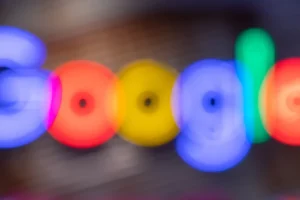The original marketing mix consisted of the 4Ps: Product, Price, Promotion, Place. With today’s variety of marketing tools and channels, it got a bit more complex. So now the marketing mix can be described as a holistic strategy of actions that a business takes to promote its products or services in the market.
All marketing efforts have to be integrated and aligned into one strategy to reach a goal.
Let’s walk you through some examples of the modern marketing mix.
Each instrument has to play its part
Marketing in the age of the internet is a more complex and interesting business than it was 20 years ago. While marketing is trickier to master, it is also more powerful than ever. Just think about all its possibilities. You can reach people in every part of the world right now.
Planning out your marketing strategy requires you to take a holistic, integrated approach considering all the marketing tools and channels you have at your disposal.
You can compare your marketing strategy to a music band – each instrument is played in a matching tone, to the same rhythm, following the right timings to create a harmonic outcome. Or think about a car – all the different parts from the engine to oil, water, spark and diff do their job to make the car move forward. In the same way, your marketing mix needs to include all the necessary tools and tactics working in harmony. Then you’ll be able to distribute a consistent message with the right timings through the appropriate channels, to convert your prospect into a customer.

The new ways of composing communication
Businesses have to adapt to the way that the sales cycle has changed. A print ad in a newspaper isn’t enough anymore to lead a person from being casually interested to becoming a customer.
Today’s research tools are literally at the fingertips of each person, and a smartphone spits out much more information than a newspaper. So companies have to make sure that they are available and informative on every platform.
Let’s take a walk through the Sales Cycle

Your potential customer starts out by seeing your ad on Facebook and then clicking through to your Facebook profile. Later this person conducts a Google search for your business, where they will find an organic listing for your keyword, as well as a shopping ad and a Google My Business Page with useful information. During following online activities, a remarketing campaign serves your ad on YouTube. After a bit more research, they click on your call to action (CTA), end up on your website and purchase your product.
Suddenly the time and effort spent on social media marketing, Google Ads, SEO and a new website have all come together to make this sale. With any one of these marketing components left out, you could have missed the opportunity and a competitor could have capitalized on it.
Your website is a Marketing Instrument
Another thought experiment: A business sets up a website. The business does not see an immediate increase in customers coming to their retail store, nor does the phone start ringing off the hook. Is the website a failure? – Not necessarily.
If the business had opened a new retail outlet, they would’ve made sure that everyone knew about it – a billboard, a balloon arch, flyers, or an event with opening specials advertised in the window.
So why is it when a new website is launched that it doesn’t receive the same marketing attention? Every marketing tool that you have, should be leading your customer to the same place: into your sales cycle.
Your website is your online storefront, which is ultimately a tool in your marketing arsenal to get the customer to make a purchase. So you need to make sure to drive traffic to your website. All your marketing tools need to work together to increase your marketing value exponentially.
A mix of Sales Cycle Stage and Marketing Instrument
An integrated marketing approach delivers wherever the prospect is in the sales cycle.
Every type of customer needs to feel addressed: the customer that is still looking for different options, the customer that has made a buying decision and is searching for the right supplier, or the customer that has bought from you before and is potentially a lifetime customer. At each of these stages, your marketing tools need to be communicating in a way that convinces the customer to buy from you.
Now think about which marketing tools and channels are the right instruments to play together for your brand and target audience. Figure out how you can integrate them into one harmonic strategy to communicate a clear and compelling message. Consider each channel’s properties and each stage of the sales cycle.
This will help you to map out a plan and ultimately generate more online traffic and sales.
Contact us today to discuss your options of remixing your advertising strategy!







